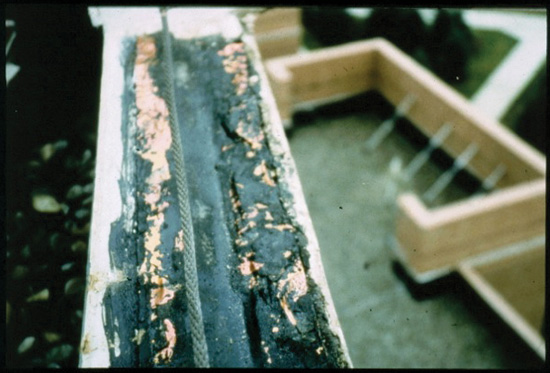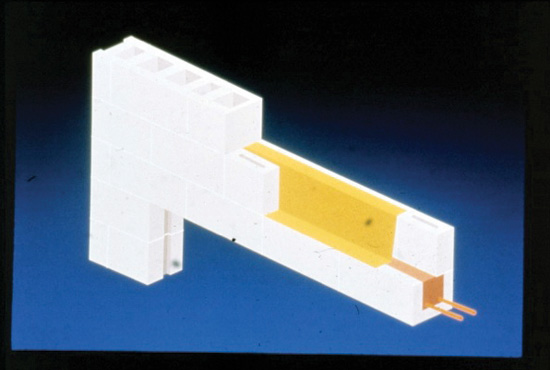From Mortar Snots to Perpends: The Basics of Through-Wall Flashing
Roofs, Copings and the Top of Walls
Roofs, copings and the top of walls are areas that require the installation of both the through-wall flashing and the roofing counter flashing. If these are not done at the same time the roofer will return later to saw cut the mortar joint to install counter flashing, blocking or breaking weeps and through-wall flashing. Coping stones are less porous than brick and do not absorb much moisture. However, water will enter through mortar joints. The detail for this condition should show raked mortar joint, with backer-rods and a quality sealant. This area is one that may need constant maintenance even with the most careful detailing. Because of severe exposure to moisture, the joints will open up early in the building's life.
Metal copings can also be penetrated by wind driven rain. Metal copings come in sections from 10 to 14 feet and water can pool and enter in the overlaps. Through-wall flashing can be installed at the top of the masonry wall by the mason. As an alternative, the roofer can run his roofing membrane up and over the parapet to stop water entry through the top of the wall.

Photo courtesy of Hyload Inc.
Problems occur when copper is “almost through the wall” flashing.
This illustration is an example of “copper almost through the wall flashing.” The specifications and details for this project clearly showed that the flashing was to be brought through the wall on both sides of the wall. This section of coping was opened up because of severe leaking to the windows below. Again, the water got through the mortar joints, between the coping stones, and easily got around the flashing because it was not brought through the wall. Maintaining communication between the various subcontractors to integrate elements at each stage of the project is critical to successful detailing.
Flashing should be placed at the top of all masonry walls. This includes walls that are outside the building, some of which are part of an entry sign with the company's name. Others are used to hide electrical equipment and garbage dumpsters. If flashing is not placed there, efflorescence will occur on the wall. Efflorescence occurs when water moving through the wall brings salts from the cement mortar to the surface causing powdery white streaks. Efflorescence can both be a cosmetic as well as a structural problem. Without water, efflorescence will not occur. Staining can also be caused because there is no drip edge to the through-wall flashing The purpose of the drip is to allow the water that is collected by the flashing to run out the weeps and drip away from the building, not run down the face of the building.
Communication and Isometric Drawings
The power of additional isometric drawings in construction drawings is that the design professional can clearly demonstrate design details correctly. A three-dimensional drawing of a single wythe construction wall is illustrated as an example. Assuming this detail is for a 12-inch wall, the course above the opening is broken into an 8-inch and a 4-inch block, installing the flashing in a “Z” type configuration. Single wythe walls receive flashing at all the same places: at grade, above and below wall openings, at the top of the masonry wall and/or any place that an obstruction to the downward flow of water would occur, bond beams.

Photo courtesy of Hyload Inc.
An isometric drawing showing flashing details.
The Brick Industry Association (BIA) is “the national trade association representing distributors and manufacturers of clay brick and suppliers of related products and services. Since it's founding in 1934, the association has been the nationally recognized authority on clay brick construction and represents the industry in all model building code forums and national standards committees.”5 They provide a library of technical notes with three dimensional images of many through-wall flashing details. Isometric details are one of the best ways to convey information for three-dimensional forms to masons along with full-scale models for difficult details. They can convey all of the parts and location of elements that comprise correct through-wall flashing details, weeps, stubs, end dams and the shingle overlapping of membranes. Most trades build from drawings or examples, not from specifications that are more than likely to be left in the office.









